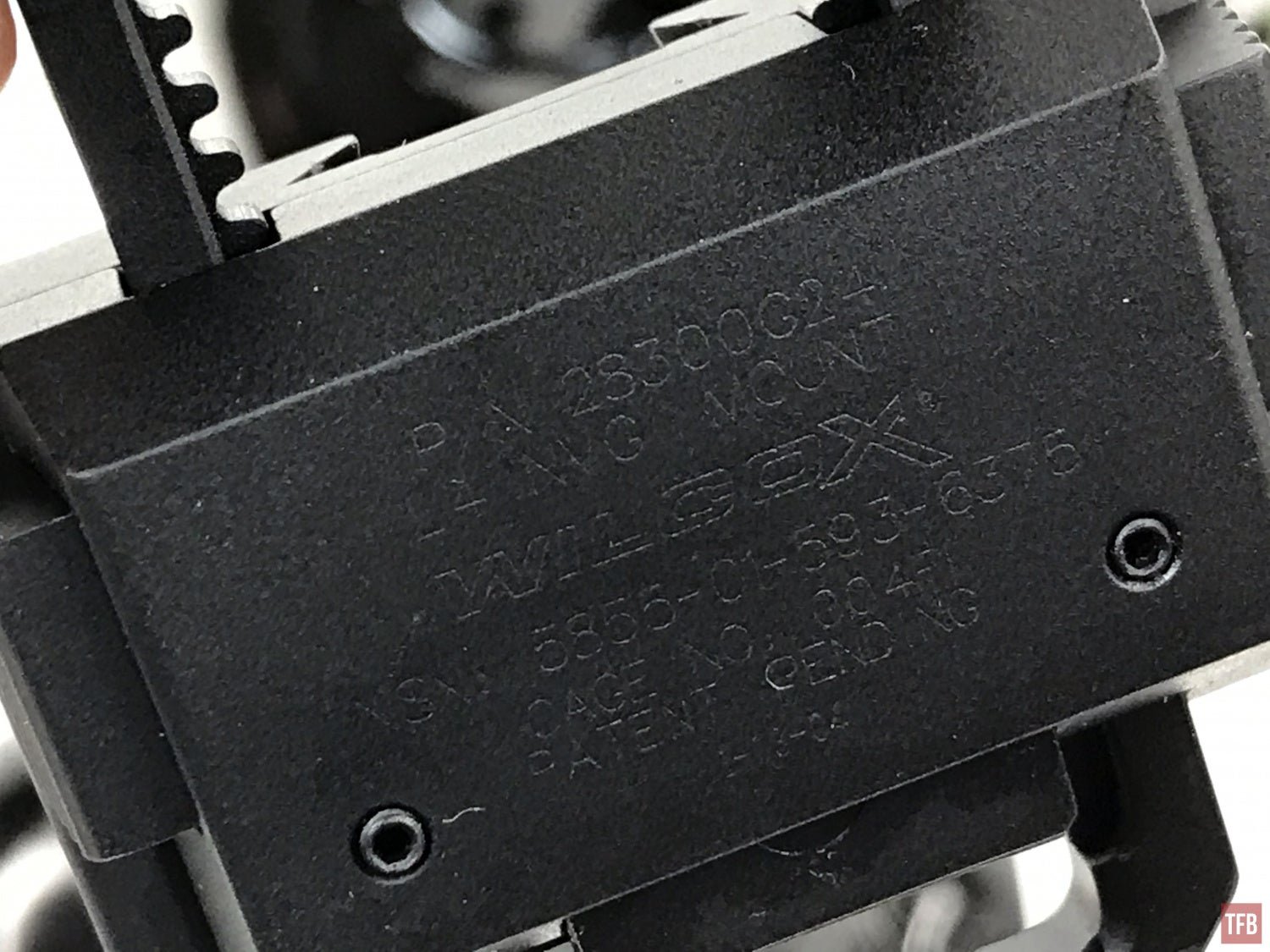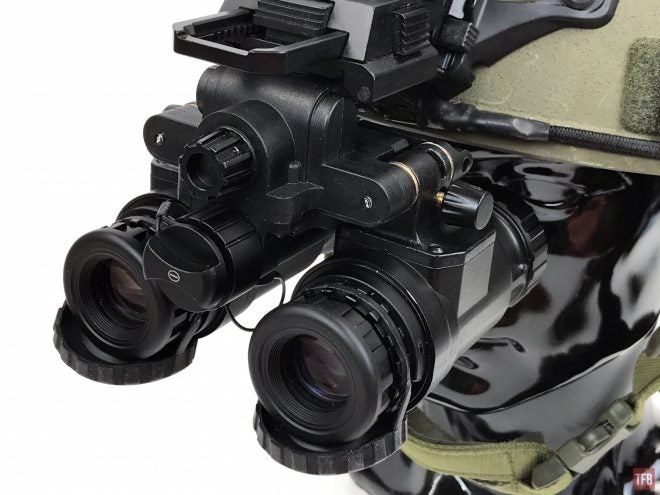For this week’s Friday Night Lights we resume our Dual Tube Spotlight and look at a new bino NVG from ATN. The ATN PS31 is an articulating housing that resembles an L3 PVS-31 but it has features that set it apart from the pinnacle of dual tube night vision goggles.
ATN PS31 Is Not A PVS-31

At first glance, the PS31 certainly looks like a PVS-31 however there are some differences. Some are cosmetic while others are feature-based and are a considerable improvement over the L3 PVS-31.

The first difference you notice with the PS31 is the weight. The L3 PVS-31 is famous for its contract weight. The military wanted a goggle that weighed less than one pound. PVS-31s weigh around 15.5oz. The ATN PS31 weighs 21.5oz. While I do not know the individual weight of the PVS-31 components to compare, the ATN PS31 does have some differences that could explain the weight difference.
The monocular pods are made of metal whereas the PVS-31 is a polymer.

Unfortunately, the hinge is not made of metal and that is the area where PVS-31s tend to break. Unlike the L3 PVS-31, the ATN PS31 has adjustable diopters. Which means you can adjust the eyepieces to your eyesight.

Another difference is that each monocular pod is individually purged. You can see a purge screw installed at the back of the hinge. The smaller screws on either side are for attaching the monocular pods to the hinges.

This is quite different from the PVS-31 which has a purge screw in the tower above the bridge, the opposite side of the remote battery pack port. The PS31 has a remote battery pack as an optional accessory however it is not the same Fischer connection like the PVS-31 or BNVD 1431.

However, the battery pack does not seem to be needed. The PS31 is powered by a single CR123. A better option than the PVS-31 which needs a lithium AA. The PVS-31 will not work with alkaline AA batteries. The battery cap and power knob are made of metal.

According to ATN, the PS31 will run for 60 hours on a single CR123. If you add the battery pack, which uses 4xCR123, you will get a combined 300 hours of continuous use.
At the front leading edge of the PS31, you will notice what looks like two LEDs.

The PVS-31 does not have an onboard IR illuminator. The PS31 does. However only one is an IR illuminator. The other LED is actually a light sensor. It is an LED but it is converted to sense light.
Unlike the PVS-31, the ATN PS31 does not have manual gain. The power knob is a four-position selector.
- Off
- On
- IR Illuminator On
- Auto IR Illumination
Selecting the fourth position enables the reversed LED light sensor. With enough ambient light, the IR illuminator will not turn on.

One of the features that sets the PS31 above the PVS-31 is the fact that the monocular pods use magnetic reed switches to shut power to the tubes when you roll the pods up. We saw this in the DTNVG and reportedly the BNVD also has this auto shut off feature. However, the PS31 do not shut off when you fold the NVG mount up against the helmet. You need to roll the pods out to shut off the tubes.



ATN includes a dovetail NVG mount that appears to be a Wilcox L4 G24.


50° FOV
The ATN PS31 has 50° lenses. Typical helmet worn night vision like a PVS-14 or dual tube binos have 40° FOV lenses.

40° FOV

50° FOV
Notice you can see that van at the left edge with the 50° FOV but you cannot with the 40° FOV.
Most 50° lenses have distortion to some degree. Some may have a form of pincushion distortion aka fisheye effect. The ATN PS31 does not seem to have pincushion distortion but it does have a narrow eye box. However, the eye box is not quite the same as a scope. Rather than incur scope shadow, the image blurs pretty quickly if your eyes are off axis. It is really noticeable as you move away from the eyepiece. Also, the eyepiece is slightly smaller than my ENVIS eyepiece.

Take a look at the video below. One thing I noticed as well about the 50° FOV lenses, is that it does not have the lasso/hoop like the AGM NVG-50.
With the 50° FOV lenses using a COTI (Clip-On Thermal Imager) works but the image is smaller.




COTI mounted onto PS31 50° FOV
Above, the COTI thermal image is that circle within a circle. See how small the coverage is compared to the rest of the night vision image? Now look at the image below. Same COTI but mounted on my DTNVG with 40° FOV lenses. The COTI image appears to fill more of the image.

COTI Mounted to 40° FOV
Final Thoughts On The PS31
The PS31 is better than the NVG-50 for sure. Aesthetically it resembles the PVS-31 and for those who want a goggle that looks like a PVS-31 but not have to shell out $12K while still having customer service then ATN is a pretty good option.
The eye relief on the PS31 is certainly better than the NVG-50 but not as good as other goggles with PVS-14 optics. As long as you have the ATN PS31 oculars set to your eyes then the image is great. I am unsure as to why the monocular pods are made out of metal which adds a significant amount of unnecessary weight. Also, I would have liked the PS31 to come with the remote battery pack. They sell it separately for $499.
ATN lists four different versions of their PS31 goggles:
- PS31-2 $4295 Gen 2 Green Phosphor
- PS31-WPT $4795 Photonis White Phosphor
- PS31-3 $6495 Gen 3 Green Phosphor
- PS31-3W $7495 Gen 3 White Phosphor
The unit I am testing is their PS31-3W. It has L3 white phosphor image intensifier tubes inside. For only $7500 you have an articulating unit with L3 WP tubes, that is not bad at all. And they look good too. For more information go to their website.
 Your Privacy Choices
Your Privacy Choices
